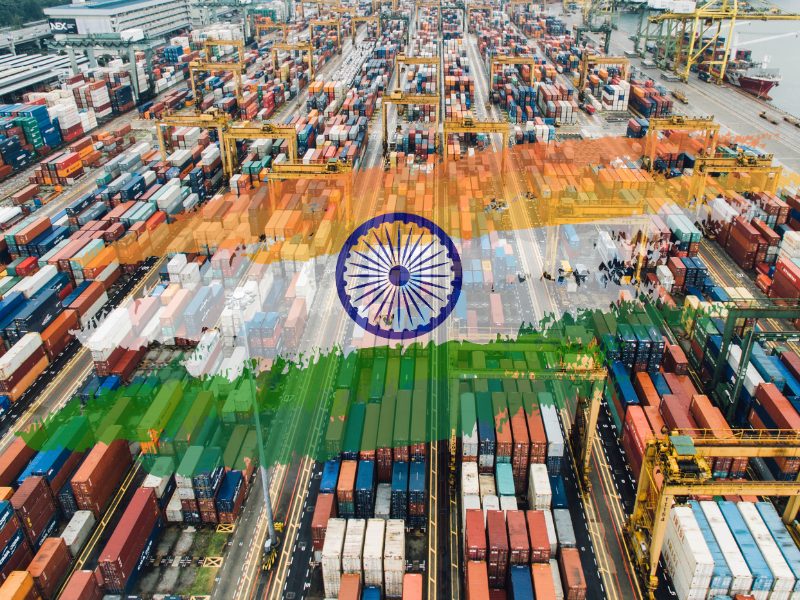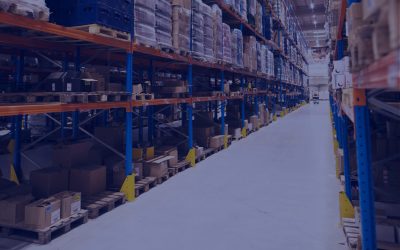With measures such as easing the EPCG program and boosting strategic sectors like electronics and pharmaceuticals, India aims to double its exports by 2030.
The Indian government has launched a series of initiatives to strengthen its foreign trade and achieve ambitious growth over the coming years. One of the key steps taken was the decision to ease the requirements of the Export Promotion Capital Goods (EPCG) program, especially for sectors where exports declined by more than 5% over the past year.
Easing the EPCG Scheme
The EPCG is an initiative that allows exporters to import capital goods at reduced customs duties, provided they meet Export Obligations (EO) over the following years. Now, according to a circular issued on January 21, 2025, by the Directorate General of Foreign Trade (DGFT), regional authorities have been instructed to revise the annual EO average for licenses granted in 2023-24.
The directive also reminds regional offices that, when reviewing applications for EO reductions, they must consider previous circulars before issuing any notices of default.
New Facilities for Exporters
2024 had already brought some precedents of EPCG easing. For example, the deadline to submit installation certificates for imported capital goods was extended from six months to three years. This modification aimed to reduce administrative burdens on businesses, allowing them to focus on production and exports.
Another new measure was the introduction of a simplified fee structure for extending EO deadlines, featuring reduced fees. Under this new structure, licenses with duty savings of up to 2 crore rupees must pay 20,000 rupees annually; those between 2 and 10 crores, 30,000 rupees; and those above 10 crores, 60,000 rupees.

Additionally, it was established that Policy Relaxation Committee (PRC) decisions would be uniformly applied and automatically implemented within the official system. In December 2024, the DGFT further clarified that changes regarding third-party exports under EPCG only apply to licenses issued on or after December 5, 2017.
Record-Breaking Exports
According to a recent report, India achieved record export figures in 2024, reaching $820.93 billion in goods and services, a 5.5% increase from the $778.13 billion recorded in 2023. Source
Of the total, goods accounted for $437.1 billion, while services contributed $341.11 billion. Among the standout sectors, electronics grew by 23.6%, reaching $29.12 billion, primarily driven by mobile phone exports, including iPhones, which accounted for 70% of mobile phone exports and 35% of total electronics exports. Source
Pharmaceuticals and drug products totaled $27.85 billion, a 9.67% increase. Meanwhile, engineering goods saw a 10.27% rise, with $9.39 billion exported in June 2024 alone.
Challenges in Foreign Trade and Future Goals
India ended the year with a trade deficit of $94.26 billion, resulting from total imports of $915.19 billion. Indian exports also faced increasing commercial pressures from the United States and the European Union, where new tariffs and carbon tax policies had a negative impact. Sectors like automotive and agriculture suffered estimated losses of $7 billion annually due to these measures.

Looking ahead, the Indian government aims to achieve $2 trillion in exports by the 2030-31 fiscal year, a target that will require an average annual growth rate of 14.4%, significantly higher than the current 5.2% pace.
Aerodoc: Ready to Support Your Expansion
Aerodoc, a leader in international transport of technology, capital goods, and high-value products, is ideally positioned to support Indian businesses expanding globally. Freight forwarding, a vital element of cross-border logistics, ensures seamless end-to-end shipment coordination and delivery.
Sectors such as electronics and technology will require specialized services to ensure safe, agile, and reliable deliveries. Our services, such as “White Gloves Delivery,” which focuses on the careful handling and professional installation of delicate products, will become even more valuable in this context. With more companies shipping high-value goods from India, the demand for premium logistics solutions that guarantee product integrity throughout the journey is set to grow. Outsourcing warehousing is a proven strategy to scale operations globally without the need to invest in building new facilities
At the same time, the surge in exports will require sophisticated management of customs documentation, compliance with international regulations, and inspection handling. Simplifying the customs clearance process will be crucial for exporters, helping avoid delays and ensure compliance. Through services such as Importer of Record (IOR) and Exporter of Record (EOR), we enable Indian companies — or those operating in India — to efficiently manage these processes, thereby avoiding costly delays and ensuring shipments comply with all regulations of the destination country.
For companies expanding into new markets, adhering to import best practices is crucial to avoid common pitfalls. Indian exporters targeting Latin America can refer to our guide on importing into Mexico for key logistics and compliance steps. Entering markets like Argentina involves navigating local regulations—our Import into Argentina guide outlines the essentials. For Asia, a major trade hub, our Import into Asia guide provides a detailed overview of logistics and compliance across this diverse region.
If you’d like to learn more about our services, get in touch with our team of experts.
Q&A
- What is India doing to boost its exports? India is implementing a series of measures to strengthen its foreign trade and stimulate export growth. Among the main initiatives is the easing of the Export Promotion Capital Goods (EPCG) program requirements, particularly for sectors where exports declined by more than 5% over the past year. Other steps include simplifying administrative procedures and lowering the costs associated with fulfilling export obligations.
- How has the EPCG program changed recently? Several modifications were introduced. The deadline for submitting installation certificates for imported capital goods was extended from six months to three years, easing administrative pressure on exporters. A simpler and more affordable fee structure was also established for extending export obligation deadlines. In addition, the automatic application of decisions made by the Policy Relaxation Committee (PRC) was implemented, and clarifications were issued regarding third-party exports under EPCG licenses issued on or after December 5, 2017.
- What results did India achieve in 2024 regarding exports? India closed 2024 with record exports totaling $820.93 billion in goods and services, representing a 5.5% increase compared to the previous year. Within this figure, goods exports accounted for $437.1 billion and services for $341.11 billion. The electronics sector stood out with a 23.6% growth, driven largely by mobile phone exports, while the pharmaceutical sector posted a 9.67% increase.
- What challenges does India face in its trade growth plans? Despite the strong export performance, India registered a trade deficit of $94.26 billion. The country also faces growing commercial pressures due to new tariffs and carbon tax policies imposed by the United States and the European Union, which have particularly impacted the automotive and agricultural sectors. To achieve its ambitious goal of reaching $2 trillion in exports by the 2030-31 fiscal year, India will need to maintain an average annual export growth rate of 14.4%, a significant acceleration compared to the current 5.2%.
- How can Aerodoc support Indian companies in this context? Aerodoc, specializing in the international transport of technology, capital goods, and high-value products, is well-positioned to meet the logistics needs of Indian companies expanding globally. With services such as “White Gloves Delivery” for careful handling and installation of delicate goods, and Importer of Record (IOR) and Exporter of Record (EOR) solutions for managing customs and regulatory compliance, Aerodoc helps businesses avoid costly delays and ensures that their shipments meet all destination country regulations.




